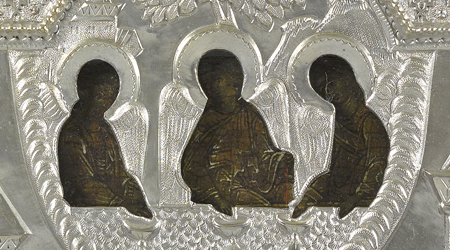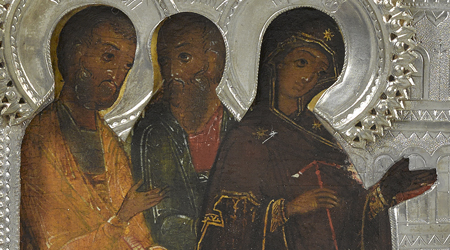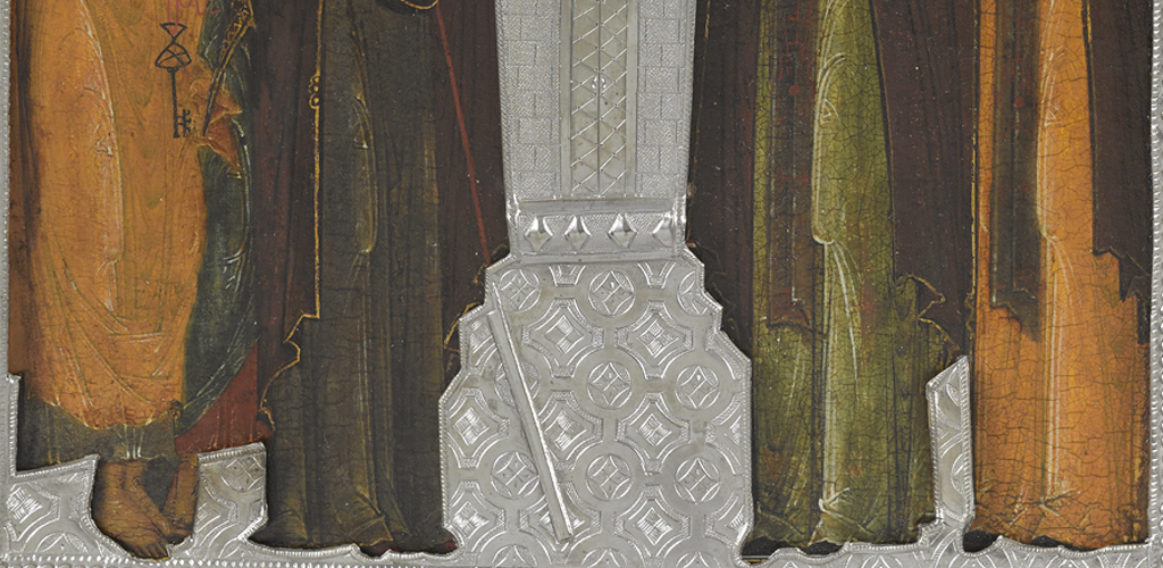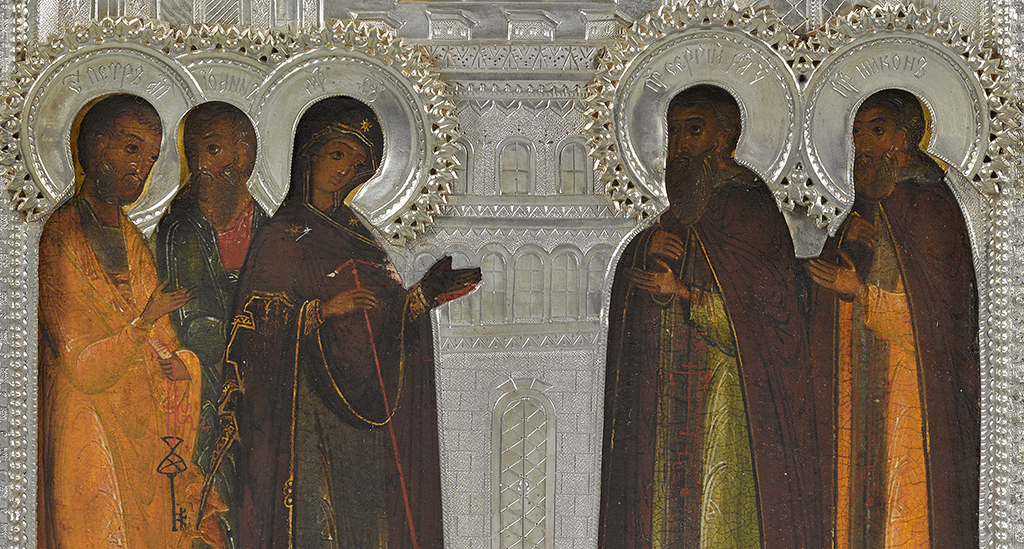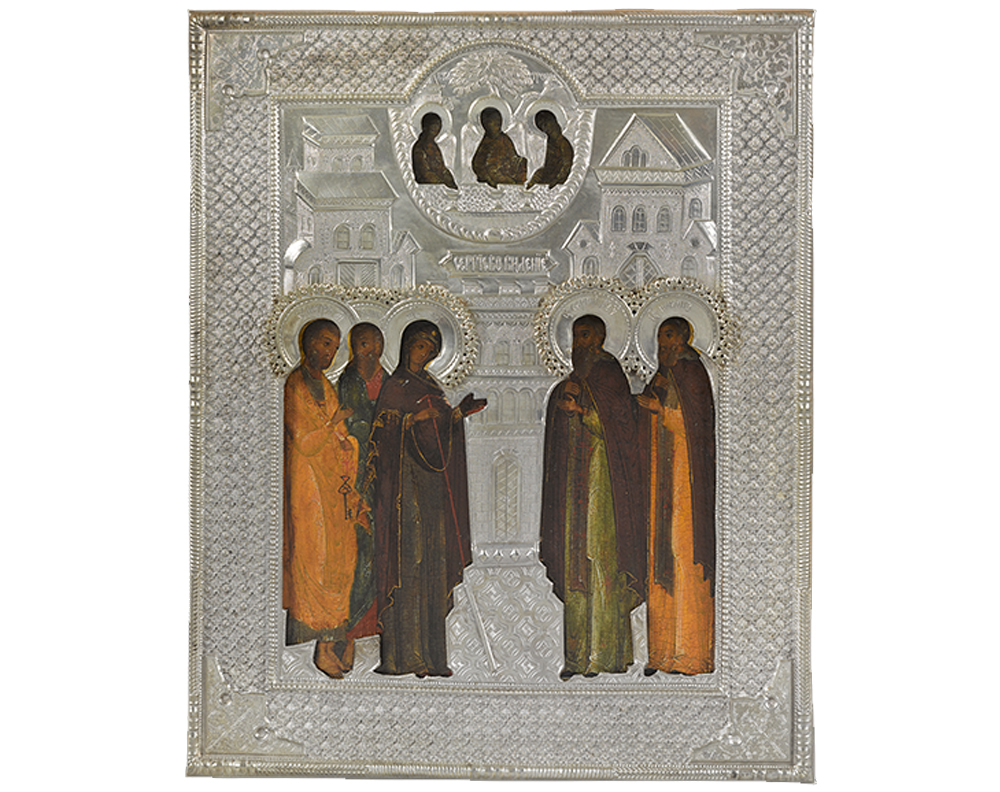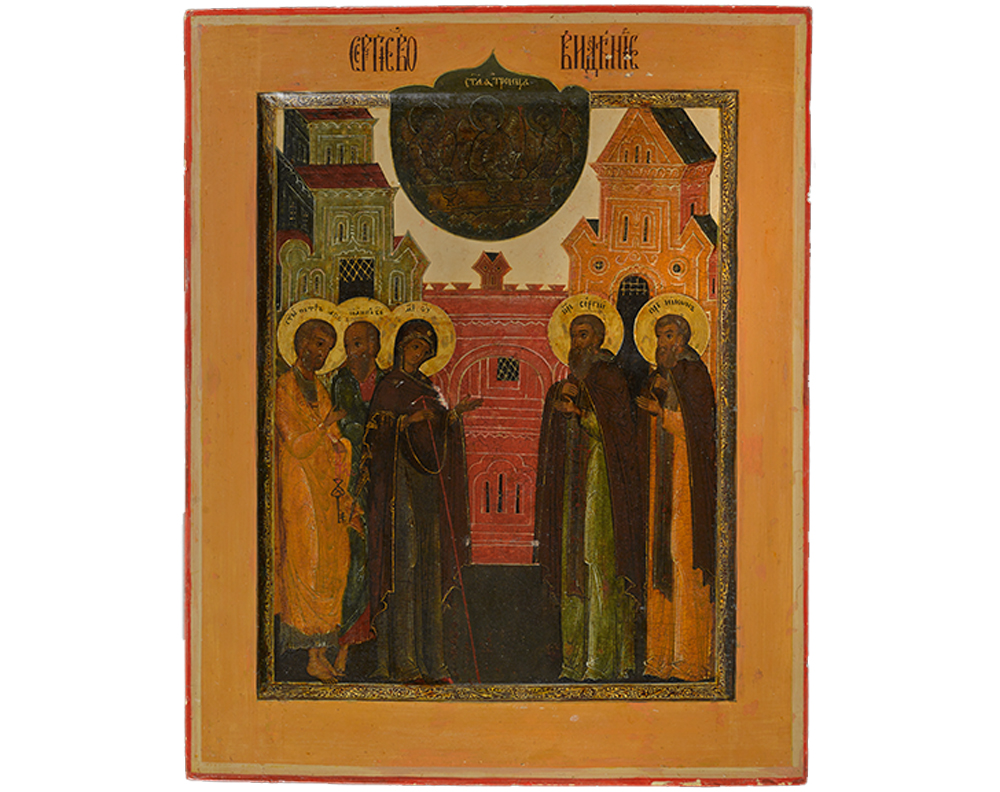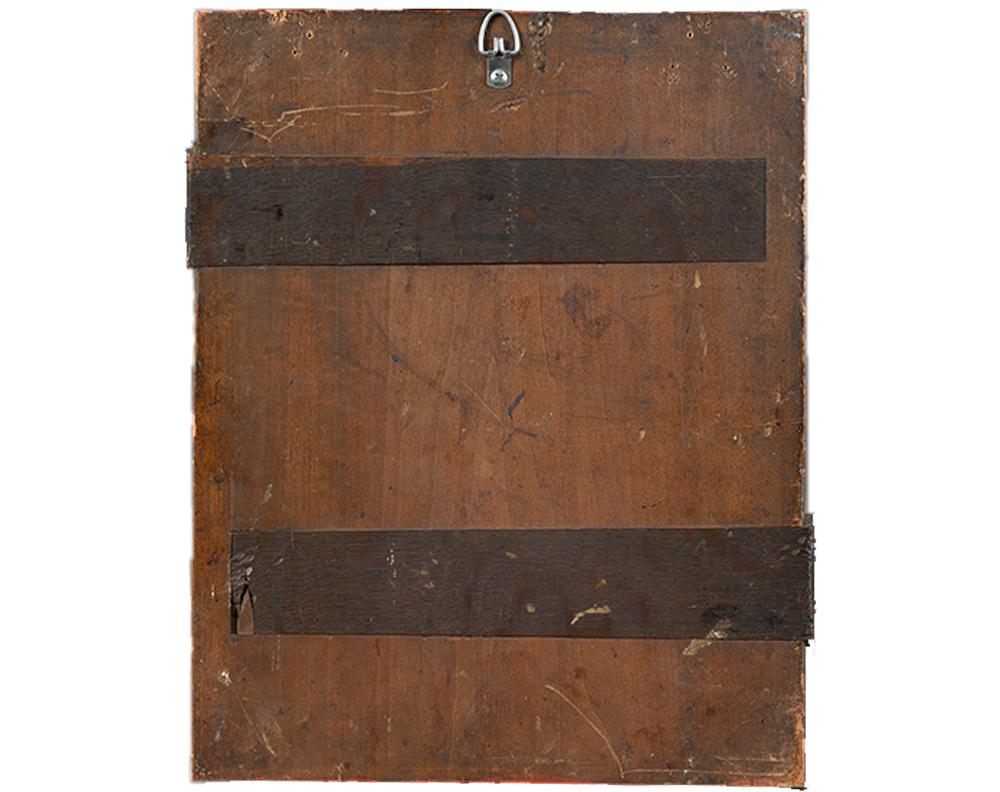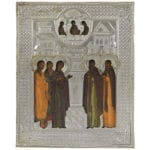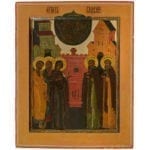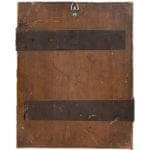Exhibitions
Icons and Easter Eggs of Imperial Russia, St Mary’s College of California, Moraga, March 18 – April 30, 1995
Russian Art of the Nineteenth Century: Icons and Easter Eggs. A Postmodern Perspective, Patrick and Beatrice Haggerty Museum of Art, Marquette University, Milwaukee, 16 April – 28 July 1996
Bibliography
A. Ruzhnikov, A. Harlow, Icons and Easter Eggs of Imperial Russia, St Mary’s College of California, Moraga, 1995, no. 3, illustrated in colour p. 8
C.L. Carter, Russian Art of the Nineteenth Century: Icons and Easter Eggs. A Postmodern Perspective, Milwaukee, 1996, no. 4, p. 54, illustrated p. 24
A traditionally painted seventeenth-century icon encased in a nineteenth-century silver-plated brass oklad. The composition depicts the apparition of the Mother of God to Venerable Sergius of Radonezh. The Virgin is accompanied by two apostles, St Peter and St John. The Mother of God reaches out to St Sergius, whose disciple and successor, St Nikon, stands closely behind him in ochre robes, mirroring Sergius’ pose to emphasise their community. In the background, painted in strikingly vibrant colours, is The Holy Trinity Monastery; above in the circular reserve is the Old Testament Trinity, the patronal icon of the monastery.
The Venerable Sergius of Radonezh was a medieval spiritual leader, known for his monastic reforms. It is said that he was unable to read as a child until visited by a spiritual elder (in some accounts, an angel) who fed him holy bread. With his brother, he built a monastery in honour of the Holy Trinity in the remote forest at Makovets Hill, where he lived as a monk. He was the leading figure in the monastic revival which took place during the Tatar occupation. His disciples spread Sergius’ teachings all across Russia and founded numerous monasteries according to his ascetic principles, which were founded on labour, humility and mystical contemplation. St Sergius was one of the primary instigators of resistance to Tatar domination; he was a close advisor to Metropolitan Alexei of Moscow and of the Moscow Prince Dmitry Donskoy, the victor over the Tatars at the field of Kulikovo in 1380. He died in 1392 and was canonised in 1452; his relics were placed in his foundation, the Trinity Cathedral of the Lavra.
Sergius’ successor as abbot of the Monastery of the Holy Trinity was Nikon of Radonezh, who came to Sergius at a very young age and was educated under one of his disciples, St Athanasius. He worked closely with Sergius and was named his successor shortly before Sergius’ death. Nikon rebuilt the monastery twice following its destruction by the Tatars in 1392 and again in 1408, and remained abbot until his death in 1426. He commissioned the famous icon-painters Andrei Rublev and Daniil Cherny to paint the interior of the new cathedral.
The appearance of Mary, with Peter and John, to Sergius and Nikon at the monastery is commemorated on August 24th. Late one night, the monks were reading an Akathist to the Mother of God, when Sergius announced that he anticipated a wondrous visitation. As soon as he had uttered these words, a voice announced, ‘The All-Pure One approaches!’ The monks rushed out of their cell and beheld Mary, who promised to bless and protect the monastery, assuring Sergius that his prayers for the monastery and his disciples had been heard and that it would prosper after his death. The monastery would become one of the most important in Russia.
